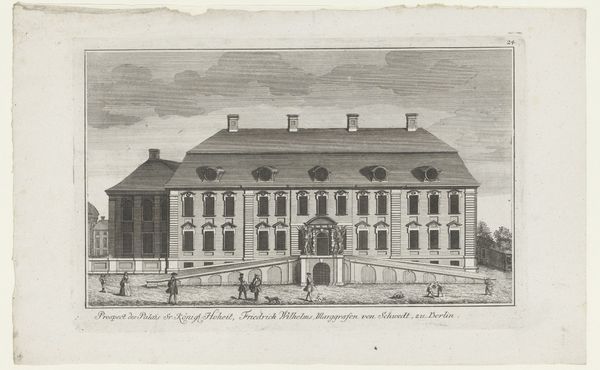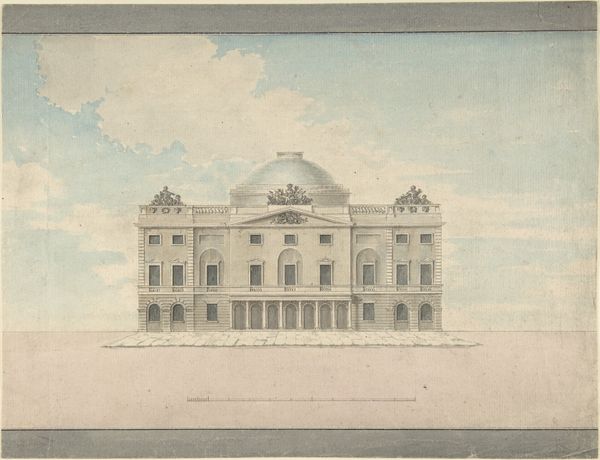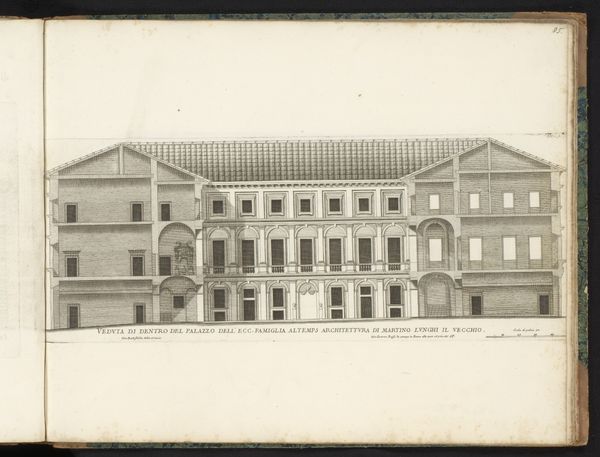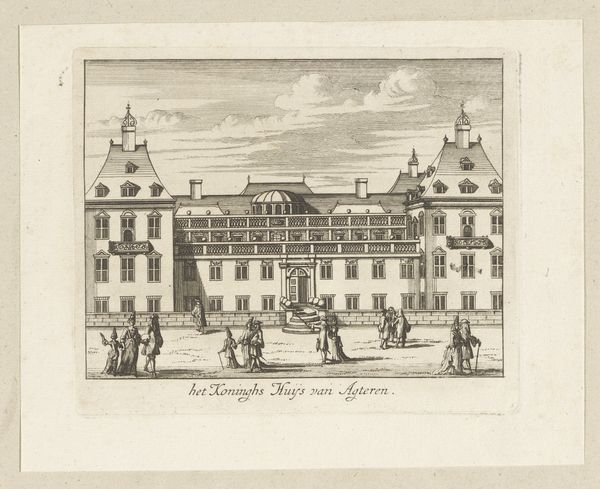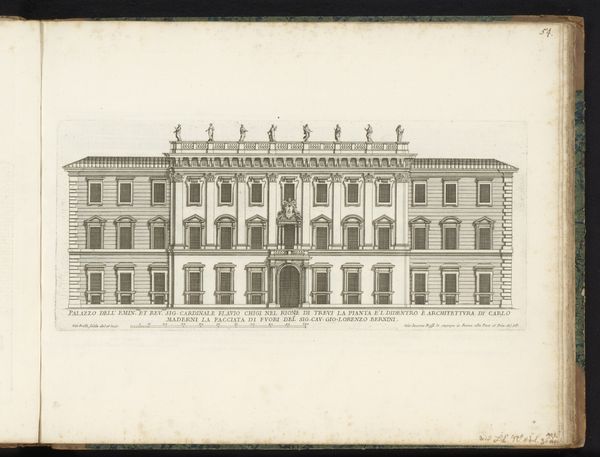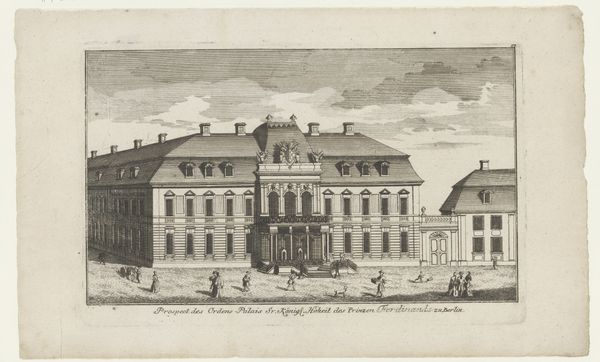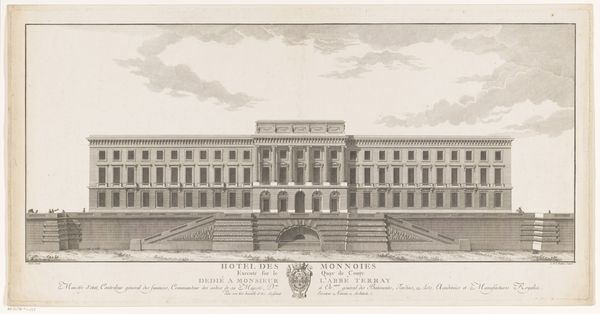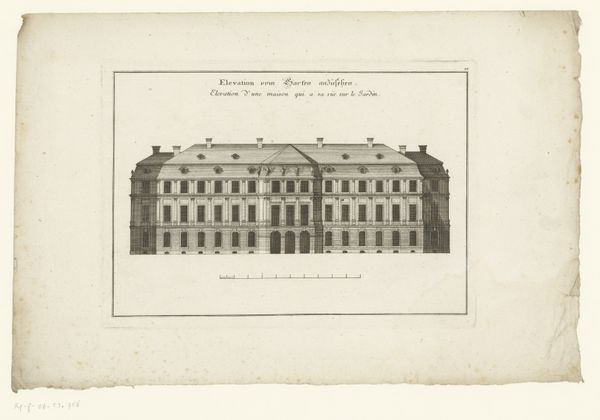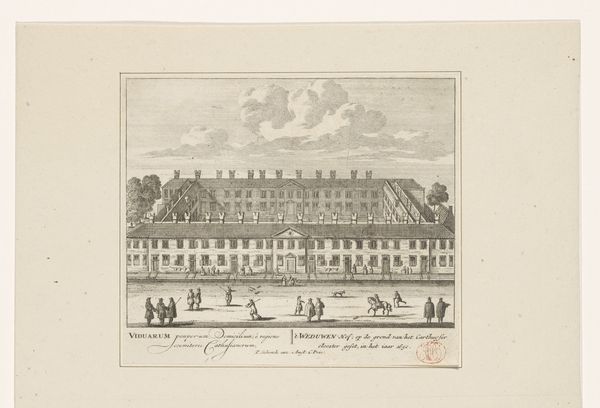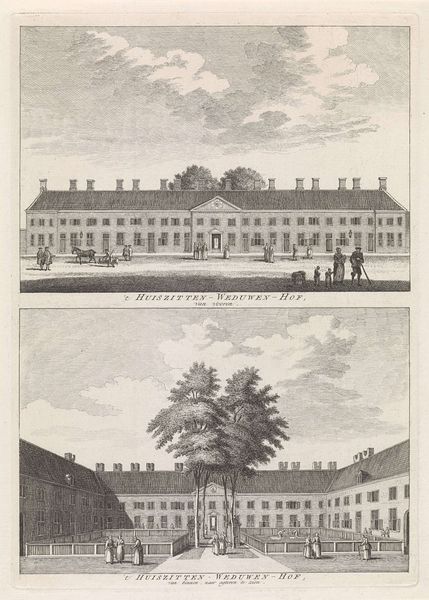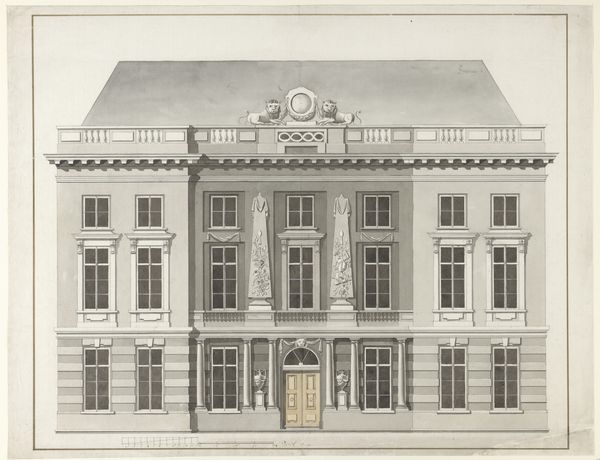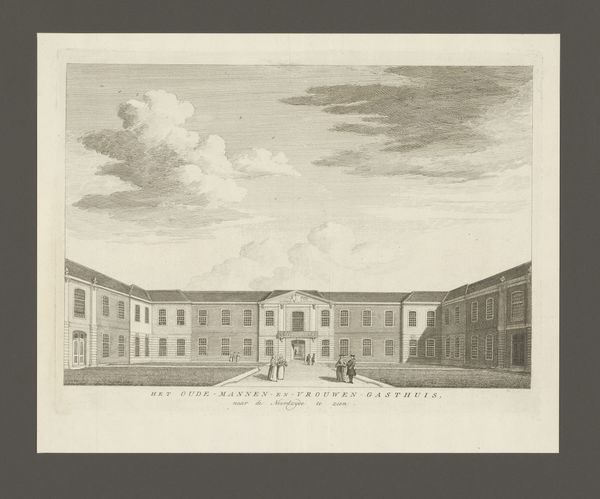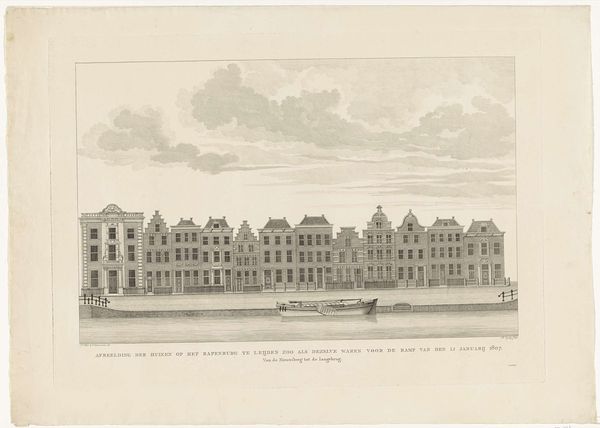
drawing, watercolor, architecture
#
drawing
#
neoclacissism
#
landscape
#
watercolor
#
cityscape
#
watercolour illustration
#
architecture
Dimensions: height 330 mm, width 245 mm
Copyright: Rijks Museum: Open Domain
Curator: Here we have "Architectonisch ontwerp voor de voorgevel van een villa", an architectural design for a villa's facade by Wybrand Tollenaar. The work is estimated to have been created between 1788 and 1852, employing drawing and watercolour techniques. Editor: Immediately, I'm struck by the calmness, almost serenity, radiating from this facade. The soft, muted watercolours give it this hazy, dreamlike quality. Like a grand estate half-remembered. Curator: Exactly. Tollenaar was clearly influenced by the Neoclassical movement. Look at the symmetry, the emphasis on proportion and the rather austere decorations. These were the principles guiding architects and artists at the time, reflecting a desire for order and reason, in response to, among others, the preceding, and somewhat chaotic, Rococo style. Editor: Yet it's not rigid. The almost ghostly watercolour washes save it from being imposing, there's a subtlety to the light hitting the façade and sky. Makes you imagine the people who might have lived here, wandering through manicured gardens on cool evenings. The unearthly feeling I mentioned earlier, also creates the sensation the drawing floats on the surface, and perhaps it also aims at reminding the passing of time. Curator: Architectural drawings like these also served a purpose beyond aesthetics. They were essentially marketing tools, visualisations intended to impress potential clients and secure commissions. Presenting a vision of sophisticated living and, of course, underlining the architect's technical capabilities. It places buildings as symbols of aspirations, both from designers and potential occupants. Editor: So, it's not just about the architecture, but the aspirations of the society and its upper crust? It seems to embody a longing for refined simplicity. Almost a blank canvas upon which to project desires. It definitely makes you contemplate what was considered luxurious and grand. Curator: Absolutely. It’s fascinating how even an architectural drawing can offer such insights. Editor: Precisely, now I see this architectural representation less of an exact representation of an element from reality, and rather a beautiful phantom of desire.
Comments
No comments
Be the first to comment and join the conversation on the ultimate creative platform.
